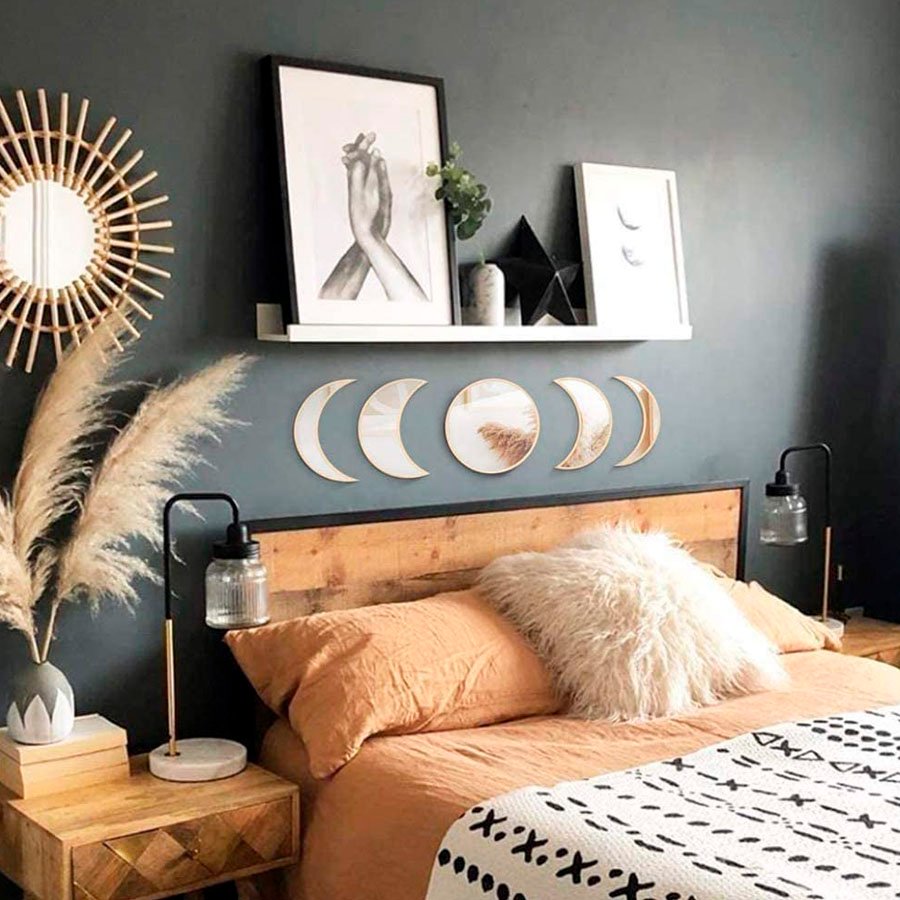Decorating your home is an exciting opportunity to express your personality, create a comfortable environment, and enhance the overall ambiance of your living space. Whether you’re redecorating a single room or undertaking a complete home makeover, knowing how to approach decorating can make all the difference. https://me-encantas.com/2023/01/31/consejos-para-decorar/ This article provides practical tips and creative ideas to help you transform your space into a stylish and inviting haven.
1. Define Your Style
1.1. Identify Your Preferences
The first step in decorating is to identify your personal style. Consider what types of décor you are naturally drawn to. This might include:
- Traditional: Classic, elegant furnishings with rich colors and patterns.
- Modern: Sleek lines, minimalistic design, and neutral tones.
- Bohemian: Eclectic mix of patterns, colors, and textures.
- Industrial: Raw, unfinished materials and a blend of metal and wood.
- Scandinavian: Simple, functional design with a focus on light and natural materials.
1.2. Create a Mood Board
A mood board is a visual representation of your decorating ideas. Collect images from magazines, websites, and social media that inspire you. This can help you visualize how different elements will come together in your space.
2. Choose a Color Scheme
2.1. Select a Color Palette
Choosing a color scheme sets the tone for your entire space. Consider these tips:
- Neutral Colors: White, gray, and beige create a timeless and versatile backdrop.
- Bold Colors: Bright and vibrant hues can add energy and personality.
- Accent Colors: Use accent colors to add pops of interest without overwhelming the space.
2.2. Understand Color Psychology
Colors can affect mood and perception. For example:
- Blue: Calm and soothing, ideal for bedrooms and bathrooms.
- Yellow: Cheerful and energizing, great for kitchens and dining areas.
- Green: Refreshing and natural, perfect for living rooms and workspaces.
3. Focus on Furniture Selection
3.1. Choose Functional Pieces
Select furniture that not only looks good but also serves a purpose. Consider the functionality of each piece in relation to your lifestyle. For example:
- Sofas and Chairs: Opt for comfortable seating that accommodates your family and guests.
- Storage Solutions: Incorporate shelves, cabinets, and storage ottomans to keep clutter at bay.
- Dining Tables: Choose a table that fits your space and accommodates your needs.
3.2. Balance Proportions
Ensure that your furniture is proportionate to the size of the room. Avoid overcrowding the space with oversized pieces. Instead, aim for a balanced arrangement that allows for easy movement and interaction.
4. Enhance with Textiles
4.1. Layer Textures
Textiles add warmth and depth to a room. Consider layering different textures for a cozy and inviting feel. Use:
- Rugs: Add a rug to define areas and add softness underfoot.
- Cushions and Throws: Incorporate various fabrics and patterns on sofas and beds.
- Curtains: Choose curtains that complement your color scheme and provide privacy.
4.2. Experiment with Patterns
Patterns can add visual interest and personality to your décor. Mix and match patterns thoughtfully:
- Geometric: Modern and structured, perfect for accent pieces.
- Floral: Romantic and classic, ideal for cushions and curtains.
- Stripes: Versatile and timeless, great for rugs and upholstery.
5. Lighting Matters
5.1. Layer Your Lighting
Good lighting is essential for creating the right ambiance. Use a combination of:
- Ambient Lighting: Provides overall illumination, such as ceiling fixtures or recessed lights.
- Task Lighting: Focuses on specific areas, like desk lamps or under-cabinet lights.
- Accent Lighting: Highlights features or creates mood, such as table lamps or wall sconces.
5.2. Choose Light Fixtures
Select light fixtures that complement your style and provide adequate illumination. Consider:
- Chandeliers: Elegant and eye-catching, suitable for dining areas or entryways.
- Pendant Lights: Modern and versatile, great for kitchens and dining spaces.
- Floor Lamps: Functional and stylish, ideal for living rooms and reading nooks.
6. Incorporate Art and Accessories
6.1. Select Artwork
Artwork adds character and personal touch to your space. Choose pieces that resonate with you and fit your décor style. Consider:
- Framed Prints: Easy to update and swap out as your style evolves.
- Original Art: Unique and personal, adds a one-of-a-kind element to your space.
- Gallery Walls: Arrange a collection of artwork for a dynamic display.
6.2. Add Decorative Accessories
Accessories enhance the visual appeal of a room. Include:
- Vases and Sculptures: Add interest and texture to surfaces.
- Books and Magazines: Stack on coffee tables or shelves for a stylish touch.
- Plants: Bring life and freshness to your space with indoor plants.
7. Personalize Your Space
7.1. Display Personal Items
Showcase items that reflect your personality and interests. This might include:
- Photographs: Frame and display family photos or travel memories.
- Collections: Arrange collections of antiques, memorabilia, or art.
- DIY Projects: Incorporate handmade items or personal crafts for a unique touch.
7.2. Create Functional Zones
Divide your space into functional zones that cater to your needs. For example:
- Living Area: Designate a space for relaxing and socializing.
- Workspace: Set up a functional and inspiring home office.
- Dining Area: Create a welcoming spot for meals and gatherings.
8. Keep Practical Considerations in Mind
8.1. Maintain Flexibility
Decorating doesn’t have to be permanent. Allow yourself the flexibility to update and change elements as your tastes and needs evolve. Use removable wallpaper, interchangeable cushions, and adaptable furniture to make updates easier.
8.2. Budget Wisely
Decorating can be done on any budget. Prioritize key pieces and invest in quality where it counts. Look for sales, shop second-hand, and DIY where possible to stay within your budget.
8.3. Plan for Maintenance
Consider the maintenance of your décor. Choose durable fabrics, easy-to-clean surfaces, and materials that can withstand daily use.
Conclusion
Decorating your space is an opportunity to create an environment that reflects your style, meets your needs, and enhances your quality of life. By defining your style, choosing the right colors, selecting functional furniture, layering textiles, focusing on lighting, incorporating art, personalizing your space, and keeping practical considerations in mind, you can transform any area into a beautiful and functional space. Whether you’re redecorating a single room or your entire home, these tips will help guide you in creating a space that is uniquely yours.



